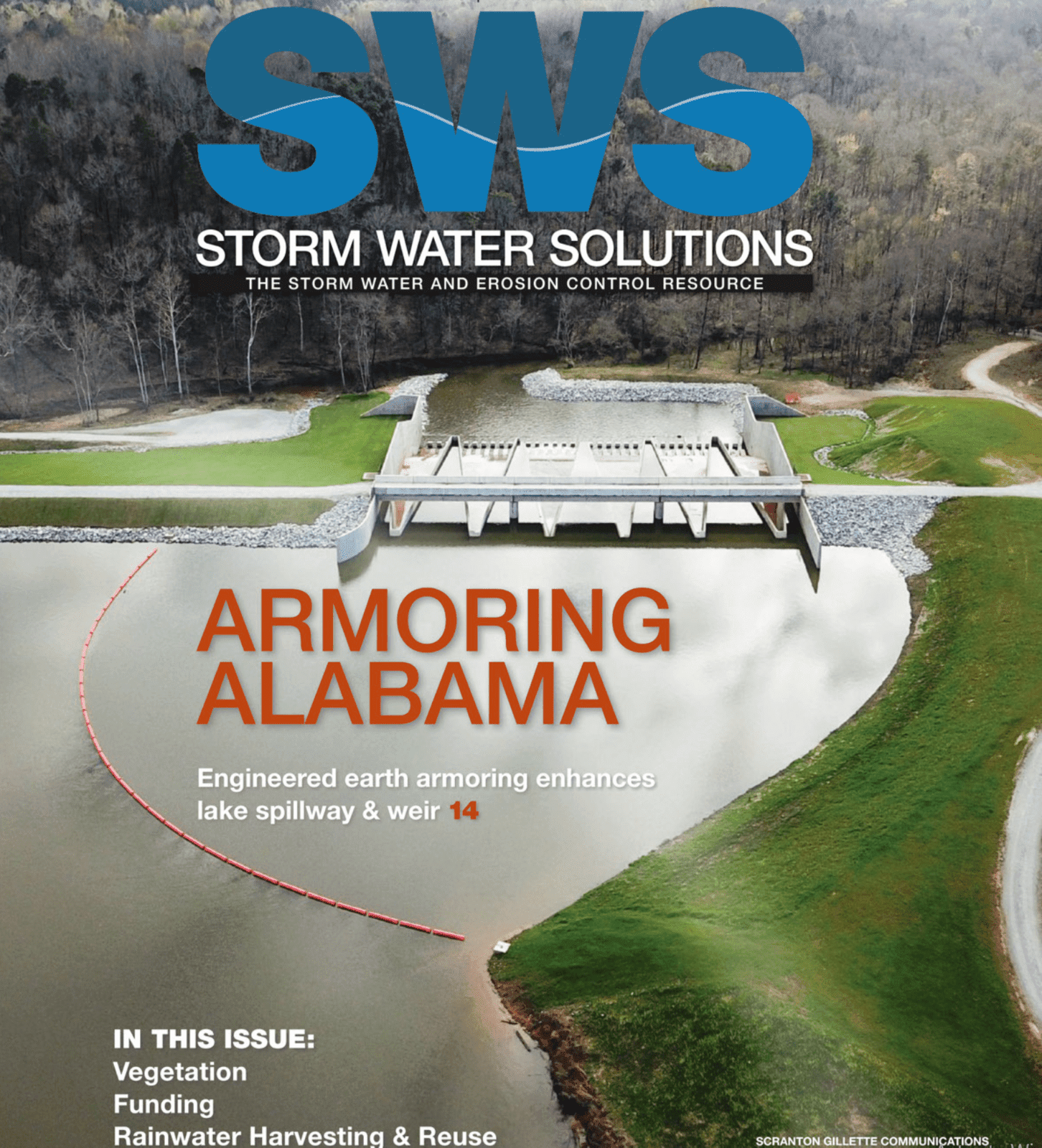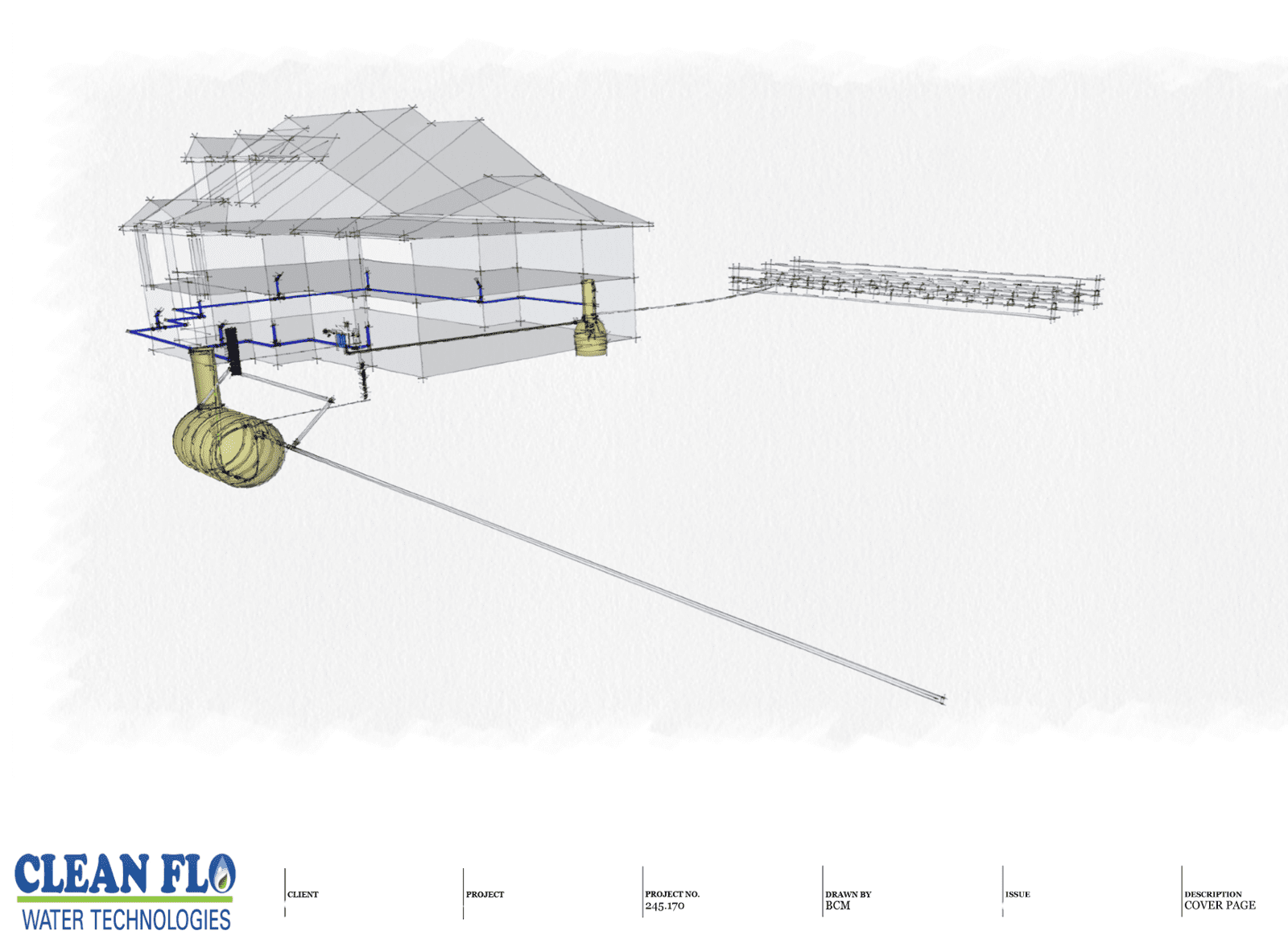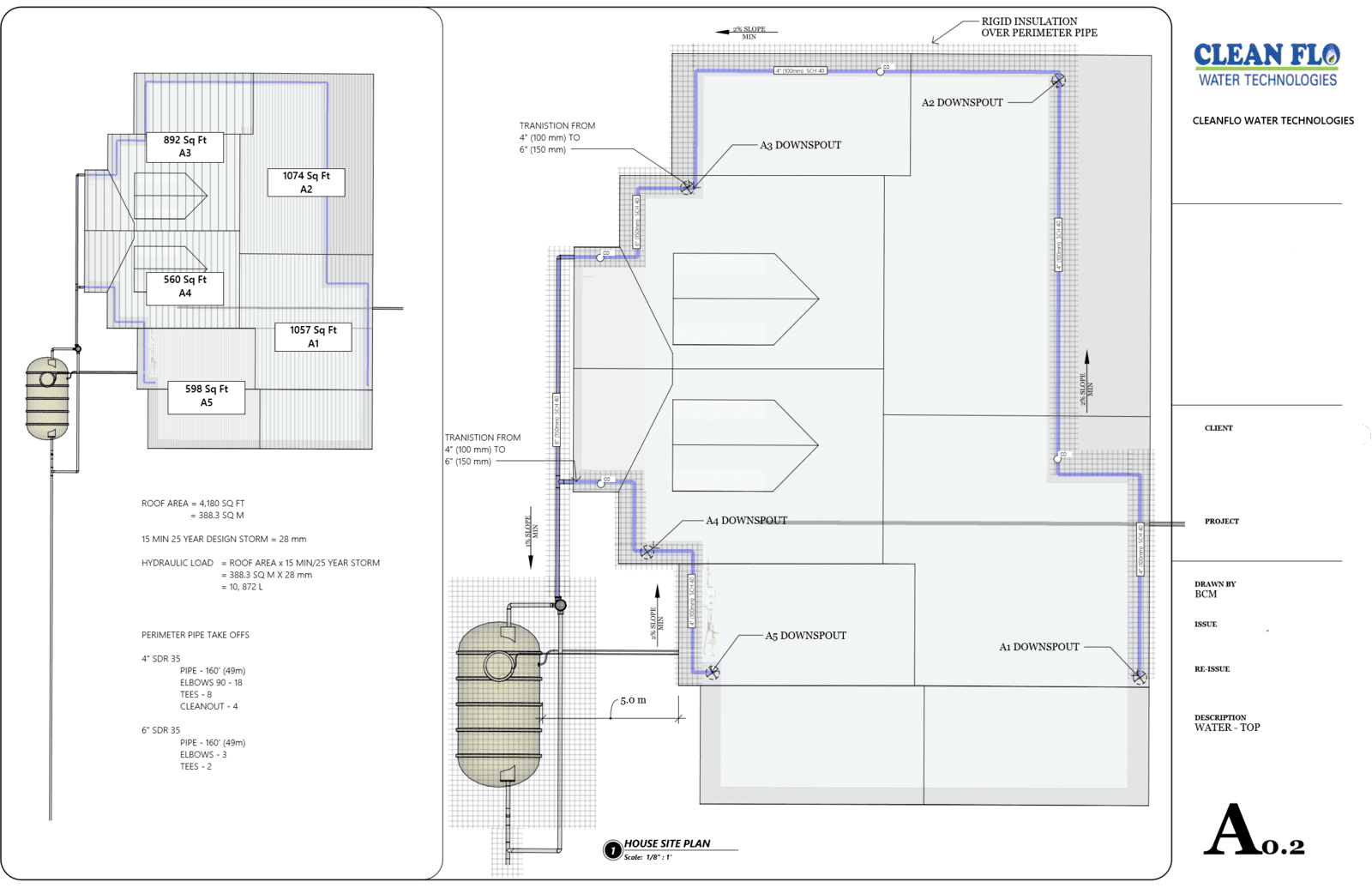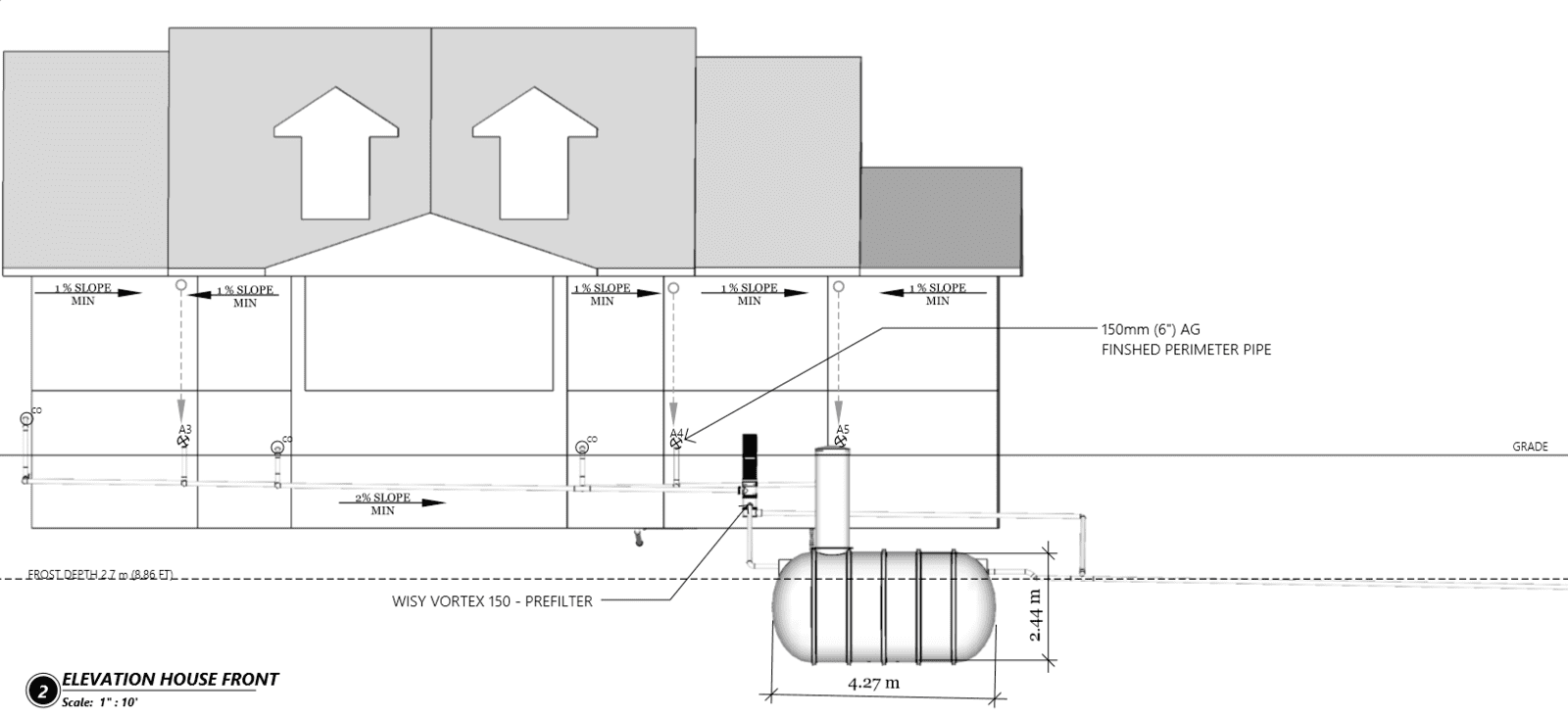Saskatchewan Rainwater Harvesting - Alternative to a Well

Case Study Published

Drilling a Well VS Rainwater
In March of 2016 a customer building a new family home on a rural property near Caron, Saskatchewan approached Cleanflo to design and install a rainwater harvesting system and a septic system. The home's roof area was to be almost 3,400 square feet, and the customer wanted to collect from the entire area.This is the water-in part of our equation. Given that this project was a new build, our customer provided water bills from their existing residence, and we assumed that their water usage would remain relatively stable; including the following fixtures: toilets, laundry, dishwasher, faucets, showers, and irrigation. The estimate we used was 404 litres per day in the winter, and 893 litres per day in the summer, which is about 200 cubic meters of water annually; this will serve as our basis for water-out when generating our hydro-logical model.
Originally Published In Storm Water Solution

Pay Back Period
With the calculations completed and the optimized hydro-logical model in hand, we were able to tell our customer they could collect enough rainwater to supply approximately 76 cubic meters or about 37% of their annual water demands. To compare, the alternative means of getting water is hauling; this costs about $0.03 - $0.05 per litre, which would cost about $6,000 - $10,000 per year. Comparatively, the mains water in Regina, Saskatchewan is sold at a rate of $3.25 per cubic meter, or 1/10th the cost of hauling water. In other words, by harvesting rainwater our customer could save $2,200 - $3,700 annually. With a price tag of $20,000 on the complete rainwater harvesting system, including the 3,500 Imperial Gallon cistern, pump, treatment system, pre-filter, floating filter, and tank level monitor, the customer could expect to see a payback period of 6-9 years for the entire system. However, because this customer is required to purchase a cistern in any case, the expected payback period of only the rainwater harvesting equipment is 3-5 years.
Originally Published In Storm Water Solution

Details
While this was a pretty in depth look at the actual dollar value of a rainwater harvesting system, and its feasibility as a water source for rural communities, rain water has a number of other intrinsic benefits. It is cleaner than ground water; rainwater doesn’t contain iron, or the hardness of groundwater. It is a sustainable resource; rainwater is a natural, and free source of water. Rainwater is tasteless, odourless, and colourless; is doesn’t contain contamination that can infiltrate ground water. Plants grow faster and healthier too. There are surely some missing, but the point is that rainwater is a reliable and inexpensive source of clean, high quality water ideal for every use. Rainwater harvesting is an example of new technologies applied to an ancient practice. Rainwater harvesting is not a product, but a revolutionary source of water.
Originally Published In Storm Water Solution
